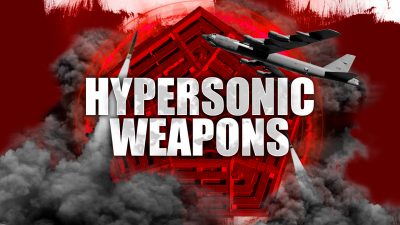Unsubstantiated Rumors About Test of Hypersonic Missile Leads to Escalation of Tensions Between US and China

All Global Research articles can be read in 51 languages by activating the “Translate Website” drop down menu on the top banner of our home page (Desktop version).
Visit and follow us on Instagram at @crg_globalresearch.
***
While the fight against fake news becomes one of the main agendas in the Western world, the hegemonic media continues to disseminate unproven information with the aim of attacking non-aligned governments. In October, several Western media agencies published a report about an alleged launch of a Chinese hypersonic missile, whose technology would be able to evade the entire apparatus of the current American anti-missile system. The news quickly spread, even without any plausible proof of what had really happened, which generated hostile and worrying comments from major US military authorities in response. Now, a new scenario of tensions is formed due to a possible media mistake.
Earlier this month, an important media outlet published an article reporting an alleged Chinese test of a hypersonic glide vehicle launched from a low-Earth orbit rocket that could theoretically be able to evade US missile defense systems. The sources mentioned in the article are anonymous. Immediately, the news went viral and was republished by many agencies around the world. The speed with which the Chinese supposedly developed this new weapon surprised US national security officials. The main fear is that Beijing has developed a modern space weapon with no equivalent in the world and that it could launch missiles at any country from space, not being detected by the current US anti-missile system. In the same sense, the apparent Chinese ability to hide the possession of such technology from the world is also a cause of great surprise.
However, Beijing denies any involvement in this type of operation. Commenting on the case, China’s Ministry of Foreign Affairs spokesperson Zhao Lijian claimed that the event described by the media was related to the launch of a spacecraft, not a hypersonic missile. These were his words:
“This test was a routine spacecraft experiment to verify the reusable technology of spacecraft, which is of great significance for reducing the cost of spacecraft use. It can provide a convenient and cheap way for humans to use space peacefully. in the world have carried out similar experiments”.
However, regardless of the discussion if it occurred or not, the repercussion of the episode was absolutely negative, boosting global tensions. Washington interpreted the case as a sign of threat in the modern space and military race. During an interview, the Chairman of the US Joint Chiefs of Staff, General Mark Milley, compared the launch of the missile to the Soviet Union’s launch of the first artificial satellite, Sputnik I, in the 1950s. The general emphasized that Beijing has shown itself to be winning the contemporary space race and that the US is currently at a similar disadvantage to that when the Soviets launched Sputnik.
These were some of his words:
“What we saw was a very significant event of a test of a hypersonic weapon system. And it is very concerning. I don’t know if it’s quite a Sputnik moment, but I think it’s very close to that. It has all of our attention (…) They have gone from a peasant-based infantry that was very large in 1979 to a very capable military that covers all the domains and has global ambitions (…) The Chinese military capabilities are much greater than that single test (…) They’re expanding in space, in cyber and then in the traditional domains of land, sea and air (…) China is very significant on our horizon”.
The comparison pointed out by the general is quite suggestive: if the US sees the current Chinese test as it saw Sputnik in 1957 (or in a “very close” way), then surely Washington’s reaction will also be analogous to that taken earlier. At that time, the American government made massive investments in the space race with the aim of overcoming Soviet technological power. Currently, something in this direction is to be expected, but in a fully militarized direction, with a race to build new hypersonic missiles and other space weapons. In practice, this would be the beginning of a process of militarization and nuclearization of outer space – something that is already a trend in the contemporary world, but which can reach even higher levels.
As we can see, the repercussion of a dubious article with of unproven allegations can be catastrophic, generating much more than a scandal, but a real military race. Beijing continues to fully deny the military nature of the launch, claiming it is an experimental spacecraft. Obviously, claims made by nation states must be respected and taken as true when confronted with claims made by media agencies. In addition, there is a matter of principle of justice: the burden of proof must lie with the agencies that released this information, as it is up to the accuser to prove their allegations are right and not the accused to prove them wrong. It remains to be seen whether there will be time for this.
Since the creation of Space Force, Washington has been progressively more aggressive in developing projects for the militarization of outer space. And maybe the current “Sputnik moment” is the perfect excuse for that. Creating more advanced protection systems and missiles with greater destructive power will be the American agenda to increase its defense potential against supposed Chinese weapons.
*
Note to readers: Please click the share buttons above or below. Follow us on Instagram, @crg_globalresearch. Forward this article to your email lists. Crosspost on your blog site, internet forums. etc.
Lucas Leiroz is a research fellow in international law at the Federal University of Rio de Janeiro.

